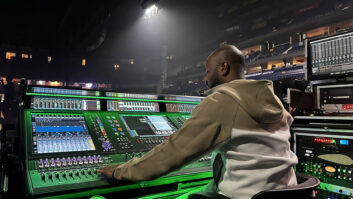Video distribution around the home is becoming much more widespread. Ian Trudgeon of thinkingbricks looks at what you need to know.
The number of video sources in the modern home sits at an average of four, taking in satellite or Freeview boxes, VHS, DVD and Blu-Ray players and games consoles. Count up your sources to see how average you are.
A basic home network will cater for distribution of digital TV or satellite TV. This is standard fit for any home, from affordable housing to a luxury apartment. Many people want to be able to watch and select DVD video, or downloaded content such as movies across a modern home too. Sure, you could just buy a DVD player for every room, but there is a more elegant, future ready alternative – video distribution.
It is common that an audio distribution system will have an upgrade link to a video distribution unit, for sending synchronised AV content around the house, allowing the TV and speakers to give whole-house access to the sources chosen by the client.
What are the consideration and requirements for video distribution?
First of all, you need the right cabling in place. For TV signals or RF (radio frequency) distribution, the right type of coaxial cable will do the job. Linked to a dish or aerial, it will carry the frequencies via a hub to each room, offering both digital and satellite access.
The output from a Sky or Sky+ box can also be distributed via the hub and a special wall-plate across the house, allowing a central box to broadcast its picture across the home. With remote control “eyes” in each room, the central box can also be controlled.
To distribute DVD pictures and particularly HDTV (high definition), different cabling needs to be planned and laid correctly, run to the TV locations around the house and back to the central AV hub area. Sometimes, for shorter runs between components and screens, an HDMI cable can be used. This type of cable cannot be cut and rejoined, so needs careful handling.
HDTV distribution is an art as well as a science, with the complicated communication and copyright information included in the signals making them very susceptible to interference. This can result in a blank screen or a poor quality picture if done without a full system design.
But if the USA is anything to go by, HDTV will be the only way we watch TV and video in future – so work with a home networking professional to get it right for your customers.
What is high definition?
High definition has become a watchword, covering the video specifications for a number of sources and screens in modern home electronics. Essentially, it comes down to the number of pixels displayed on the screen, or sent in the signal from a video source.
Pixels are the individual “cells” on a TV or computer screen, and specified as a resolution ie X (width) x Y (height).
High definition content is predominantly measured in the height or number of lines of pixels from the top of the screen to the bottom. Standard UK TV has 576 lines, and high definition starts from 720 pixels, up to the highest current level of 1080 pixels.
An HD Ready screen will have a typical resolution of 1366 (wide) x 768 (high) and will show the 720 level of high definition. True or Full HD screens have a typical resolution of 1920 x 1080 so will show the highest level of HD TV.
Modern DVD players can take the standard 576 format and upscale (process and split the signal) into 720 or 1080 level – giving you a high definition output from a standard DVD.
The next step up is Blu-Ray. Using a special blue laser to read the disc, Blu-Ray gives a full high definition experience. A Blu-Ray disc can hold the extra information that High Definition movies require and offers True HD output, in both video and surround sound. Interaction with internet content is also possible while the movie is playing, via the player and a broadband connection.
What is IPTV?
Following on from the convergence between the internet and TV, many people are using a computer or other device to download content from the internet or digitising their own DVD collection to watch. IP stands for Internet Protocol. You know what TV stands for…
The most widely advertised version of IPTV is Apple’s Apple-TV. A small box sits on the home network and uses Apple’s iTunes library to download and save films or TV shows. The Apple TV box connects to the TV, and is capable of sending HD signals to the screen.
Another option is to use a central “media server” (above), connected to the internet and with the client’s media library loaded. The media can range from photos, music right through to DVD content.
This device connects to the AV network in the home, allowing the client to access content from screens around the house. A simple menu system ensures the client can find what they want easily
Ian Trudgeon is project director with thinkingbricks. He is offering RIBA-certified CPD courses on all aspects of home technology.







